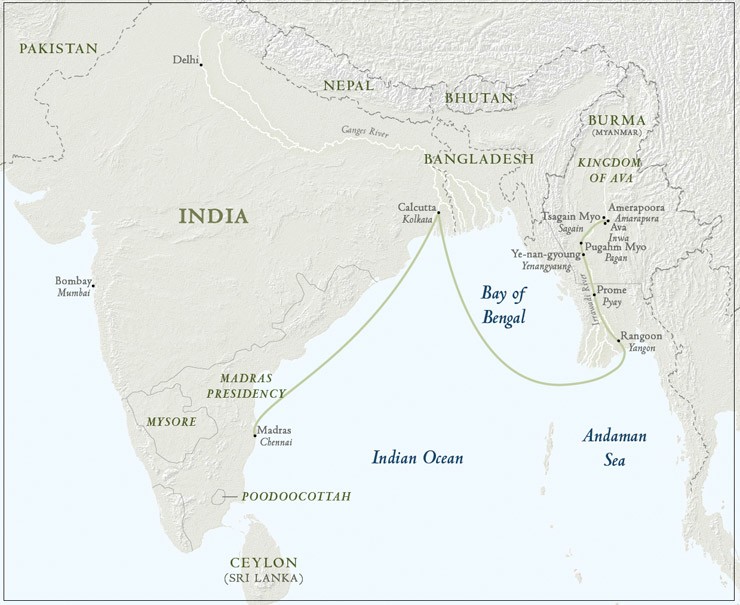Tripe, along with a topographic artist, Colesworthy Grant, was charged with creating a detailed visual record of the mission. Mindful of the honor and responsibility he had been given as the first person to photograph the region, he prepared methodically.
Exhibition Catalog Captain Linnaeus Tripe
Roger Taylor, Crispin Branfoot, with Sarah Greenough and Malcolm Daniel
AudioIntroduction to the Exhibition, lecture by Sarah Greenough, exhibition curator
Audio Symposium Lecture Part 1: ''A Glorious Galaxy of Monuments': Photography and the Archaeological Survey of India after Tripe," John Falconer
Audio Symposium Lecture Part 2: "Interpreting Early Photography in India: Medium and Method," Zahid R. Chaudhary
Audio Symposium Lecture Part 3: "Measuring Time: Linnaeus Tripe’s Inscription of the Thanjavur Temple, 1858," Maria Antonella Pelizzari
PDF Download Public Symposium Program
The Burma Mission
In 1855, following the end of the Second Anglo-Burmese War, Lord Dalhousie, the governor-general of India, appointed Tripe to accompany a mission to Burma. As little was known about Upper Burma, Dalhousie wanted to study the area to gather military intelligence, including information about local religious beliefs, topography, and mineral resources.

The route Tripe traveled (marked in green) as photographer on an 1855 mission to Burma, organized by the governor-general of India, Lord Dalhousie. In the 1850s Great Britain ruled a large area now encompassed by the modern states of India, Pakistan, Sri Lanka, and Bangladesh. The British province of Burma was formally created in 1886. (Dashed lines indicate modern boundaries.) The locations are marked by their 19th-century place names with the 21st-century names below in italics.

Colesworthy Grant, “The Creek: Ye-nan-gyoung,” August 14–16, 1855, watercolor with pen and ink, from Series of Views taken in Burma, pl. 19
The British Library, London
He covered his storage chests with waterproof cloth to safeguard the photographic equipment; packed a portable still to purify water needed for working with photographic chemicals; and had tin cases made to shield his negatives from heat and humidity. When he returned to his home base in Bangalore five months later in December 1855, he had made more than 200 negatives. He then began the long and complicated process of setting up and staffing a printing studio and making 50 copies of a portfolio, each with 120 original photographs.
Amerapoora
Tripe continued with the mission up the Irrawadi River to the royal city of Amerapoora. King Mindon (1808–1878) gave the British mission unprecedented freedom to travel throughout the city and sketch, survey, map, measure, and photograph it. Paradoxically, this hospitality provided the British with valuable military information, should they find themselves facing Burmese hostilities in the future. Tripe made nearly 100 negatives in Amerapoora. When he included many of them in his Burma portfolio, he sequenced them as if he were taking Lord Dalhousie and the directors of the East India Company on a tour of the city, starting with the residency compound King Mindon built for the British and proceeding into the center of the city. After spending seven weeks in Amerapoora, the mission sailed south to Rangoon, where Tripe made several photographs before heading back to India.


























